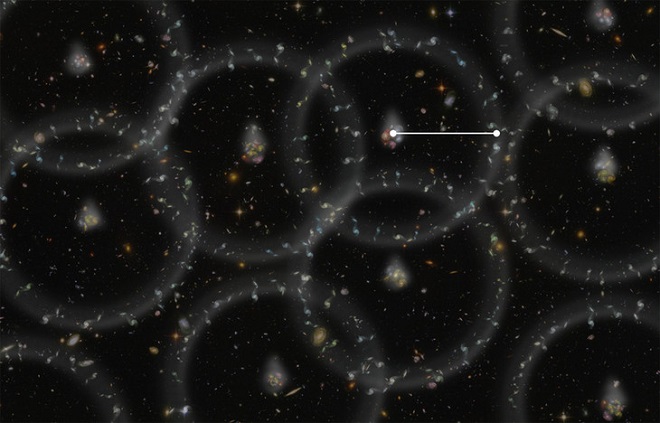January 8, 2014
UNIVERSITY PARK, Pa. -- The distance to a set of 1.2 million galaxies that are more than 6 billion light years away from Earth has been measured to an accuracy of 1 percent, scientists announced during a press conference on Jan. 8.
The measurements place new constraints on the properties of the "dark energy" that is thought to permeate empty space and to cause the universe's expansion to accelerate over time, reports the research team from the Baryon Oscillation Spectroscopic Survey (BOSS), which includes astronomers at Penn State.
BOSS is the largest of the four projects that together make up the Sloan Digital Sky Survey III (SDSS-III). "This is an amazing achievement," said Donald Schneider, distinguished professor of astronomy and astrophysics at Penn State, who is the survey coordinator and scientific publications coordinator for SDSS-III. "When I was a student 35 years ago, the distances to such far-away galaxies were uncertain by a factor of two."
"There are not many things in our daily life that we know to 1 percent accuracy," said David Schlegel, a physicist at Lawrence Berkeley National Laboratory (LBNL) and the principal investigator of BOSS. "I now know the size of the universe better than I know the size of my house."
By measuring how the light from distant galaxies has been stretched by the expansion of the universe and then by determining how far away these galaxies are, the BOSS scientists are making new inroads in the quest to understand dark energy. The new distance measurements will be presented at the meeting of the American Astronomical Society by Harvard University astronomer Daniel Eisenstein, the director of SDSS-III. The measurements are detailed in a series of articles recently submitted for publication.
Distances to planets in the solar system can be measured to high accuracy using radar, but for more-distant objects astronomers must turn to less-direct methods. Only a few hundred stars and a small number of star clusters are close enough to have distances measured with 1 percent accuracy. Nearly all of these stars are only a few thousand light years away and are still within our own Milky Way galaxy. Reaching out a million times farther away, the new BOSS measurements probe far beyond our galaxy to map the universe with unprecedented accuracy.
"Making a 1 percent measurement at a distance of 6 billion light years is a huge step forward," explained Eisenstein, "and it requires a completely different technique from measurements in the solar system or the Milky Way."
BOSS measures baryon acoustic oscillations (BAO), subtle periodic ripples imprinted in the arrangement of galaxies in the cosmos. These ripples are descendants of pressure waves that moved through the plasma of the early universe, which was so hot and dense that particles of light (photons) were tightly coupled to the protons and neutrons (known collectively as "baryons") that make up the nuclei of atoms. The size of these periodic ripples can be calculated from fundamental physics; by using this standard length as one side of a triangle, astronomers can determine the distance to the clustered galaxies.
The new BOSS measurements appear consistent with a form of dark energy that stays constant through the history of the universe. "This behavior is what one would expect from Einstein's proposal of a 'Cosmological Constant'," said Schneider. "When the BOSS observations are completed in June 2014, we should be able to place even tighter constraints on the nature of dark energy."
ABOUT THE SLOAN DIGITAL SKY SURVEY:
Funding for SDSS-III has been provided by the Alfred P. Sloan Foundation, the Participating Institutions, the National Science Foundation, and the U.S. Department of Energy Office of Science. The SDSS-III website is http://www.sdss3.org.















